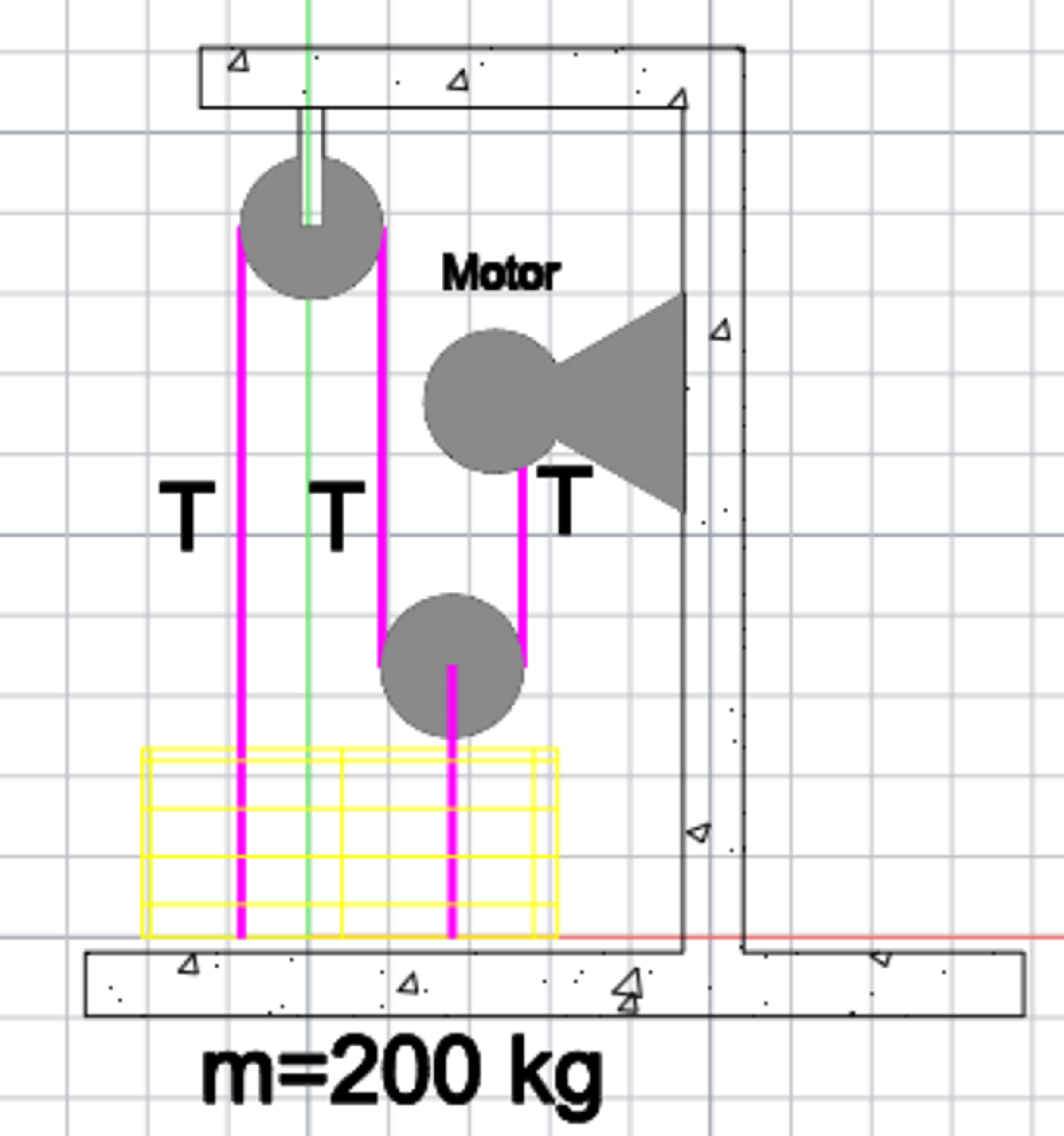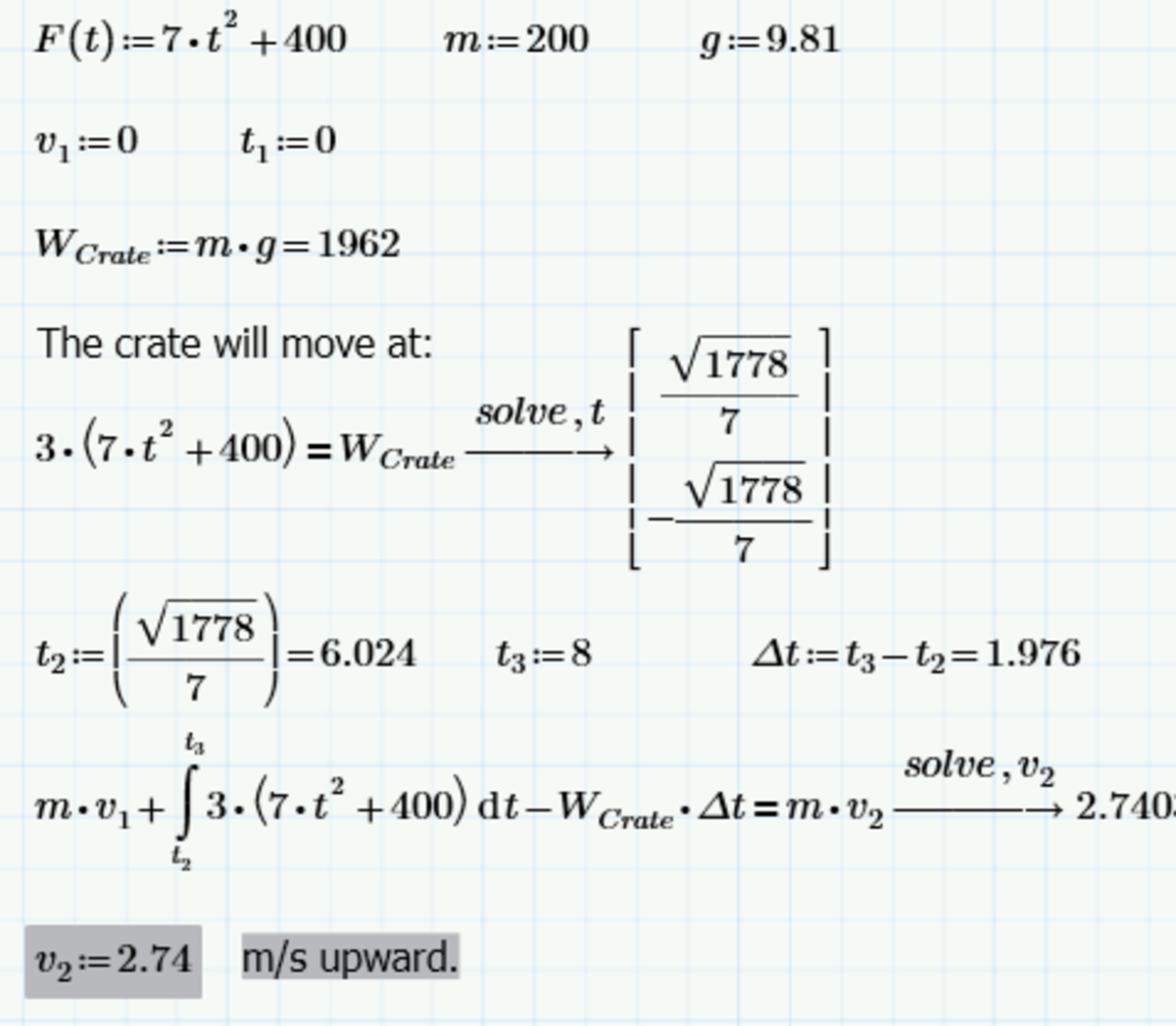Motor Pulley Crate Velocity After Motion
A motor is mounted to a wall and pulls on a cable as indicated, with The crate weighs and is at rest at Determine the velocity when 8 seconds has elapsed to 2 decimal places.
Take the gravity as .

The answer is 2.74.
This section requires Javascript.
You are seeing this because something didn't load right. We suggest you, (a) try
refreshing the page, (b) enabling javascript if it is disabled on your browser and,
finally, (c)
loading the
non-javascript version of this page
. We're sorry about the hassle.
